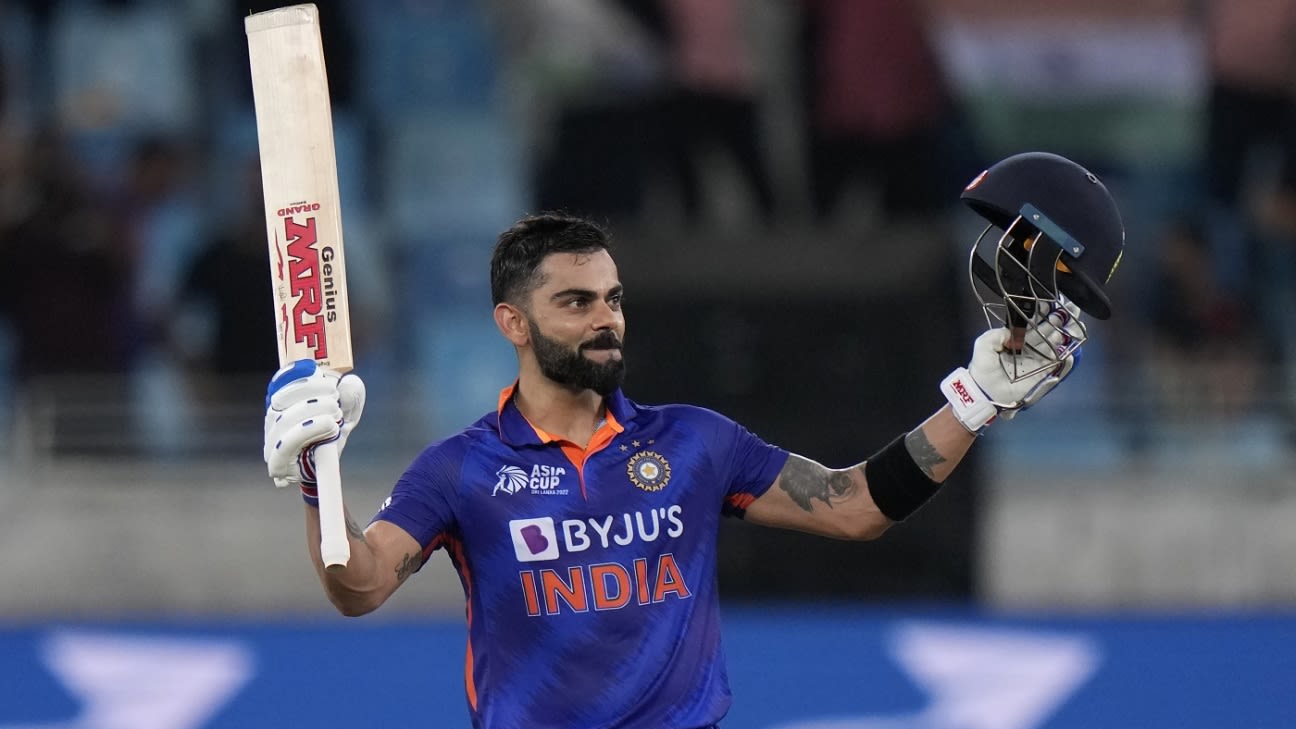
"The space I got made me feel very relaxed. When I returned, I was excited to see how I could contribute to the team. Playing this way was important for me because the World Cup is big and if I play well, I can contribute big for the team.
"I'd spoken to Rahul [Dravid] bhai three-four days back, where batting first, especially the middle overs phase, how I can improve my strike rate. My only goal was to work on whatever I need to improve, I will try it at the Asia Cup. I honestly didn't expect it [to score a T20I century]. I was shocked, [and] as you also mentioned after that, no one expected a century from me in this format after a long time. I was pleasantly surprised, grateful and honest."
Kohli finished the Asia Cup with 276 runs in five innings, striking at 147.59. After India's game against Afghanistan, he was the leading run-getter in the tournament, 64 ahead of second-placed Mohammad Rizwan. He had made two fifties and a century, his 71st in international cricket and first in over three years.
Equally noteworthy was Kohli's propensity to step out of his crease, especially against spin, something he's done quite a lot at the Asia Cup, seemingly to try and increase his scoring options. Between April 1, 2018, and the start of the Asia Cup, Kohli stepped out once every 7.9 balls on an average in all T20s. This Asia Cup, as per ESPNcricinfo's data, he stepped out once every 4.9 deliveries.
In trying to push the bar, Kohli also brought out shots he doesn't often play, like the conventional sweep. The one he hit off Mujeeb Ur Rahman was only his 24th see against spinners in all T20s in this time period, out of the 1200+ deliveries he has faced from them. This includes all kinds of sweep, including the slog sweep, so the numbers for the conventional sweep would be even lower.
Kohli explained how his focus is on playing good cricket shots, without worrying too much about strike rates and six-hitting, something he said had bothered him prior to his break. He admitted to having been "desperate to do something that wasn't in my game" at that point.
"My aim was to always to play all three formats, and I banked on good cricketing shots," he said. "I always came to every tournament or series thinking six-hitting is not a big strength of mine. I can [hit sixes] when situation demands, but I'm better at finding gaps and hitting boundaries, so as long as I can hit boundaries, it will still serve the purpose for the team.
"I told the coaches as well that I'm going to try and hit gaps rather than thinking I've to hit sixes to improve strike rates in T20 cricket. That thing I removed from my system in this tournament, and that helped because I was able to come back to my template. But it's about being in a good space and enjoying your batting.
"We can play in many ways, but my role is to play as per the situation and if it demands I have to take the scoring rate higher, I should be able to do it. My aim was if I can be in this zone, I can be relaxed because I know if I'm set for 10-15 balls, I can accelerate. I'm very happy that especially from the team's point of view, I'm back to being in my template I've played for a while, which I was going away from because I was desperate to do something that wasn't my game."
Rohit, who was conducting the interview, agreed that the knock against Afghanistan was a fine lesson in pacing an innings. "Obviously in T20 cricket we talk about big hitting and all of that. But that [century] was the perfect example of how to craft an innings without focusing so much on the big hitting," he said. "That was wonderful to see. I know it personally because I've seen you bat long enough."
With stats inputs from Shiva Jayaraman
Shashank Kishore is a senior sub-editor at ESPNcricinfo
#Asia #Cup #Virat #Kohli #Rohit #Sharma
https://www.globalcourant.com/asia-cup-2022-virat-kohli-to-rohit-sharma/?feed_id=21480&_unique_id=631b0de89af63